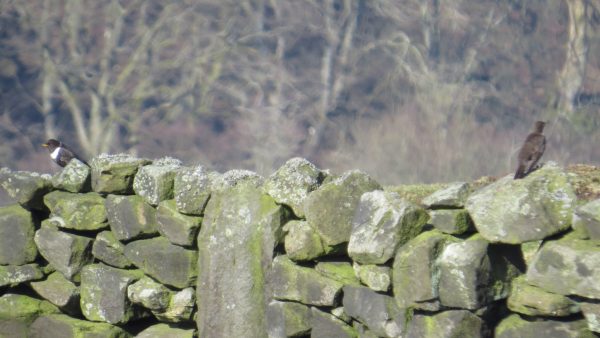On Saturday 23 June 2018 Rosedale’s Updale Natural History Recorder took 11 keen walkers along a journey through the dale visiting various habitats. Walking alongside hedgerows full of dog rose and walls lined with foxgloves and ferns was a real pleasure. The route included the river to Low Thorgill Farm, Thorgill and the hillside above Thorgill and the track north of Thorgill.
The banks of the River Seven hosted numerous birds nests including wren, robin, coal tit and dipper. Trees and shrubs alongside added nests of great spotted woodpecker, blackcap, nuthatch, redstart and green woodpecker. Further afield were willow warbler and chaffinch. All but one nest had already hosted a brood this year and were no longer in use or were last year’s. They gave a great insight in to bird breeding in the dale. A pair of green woodpeckers were still feeding young in their nest hole high up in an ash tree alongside the river and the group were very lucky to watch one of the young peering out of the hole. A spotted flycatcher performed what they do best, flitting out from a branch, taking an insect in mid-air and returning to the same perch. Over the moor a red kite soared high and curlews gave protecting warning calls to their young.
The group visited habitats which favoured some less common flora. Wet flushes revealed musk, creeping forgetmenot and round-leaved water crowfoot. Unimproved acidic pasture hosted our locally rare heath spotted orchid (just the one), bitter vetchling, heath speedwell and heath bedstraw. Close to the moor there was the delicate looking but robust chickweed wintergreen. Both trailing and slender St John’s wort was encountered on a dry trackside leading up to the moor. Three sedges included yellow, oval and remote.
It was good to see ringlet, common blue and small heath butterflies but none in great numbers despite the warm weather.
It was a pleasure to lead such an engaging and interested group Updale Natural History Recorder
























